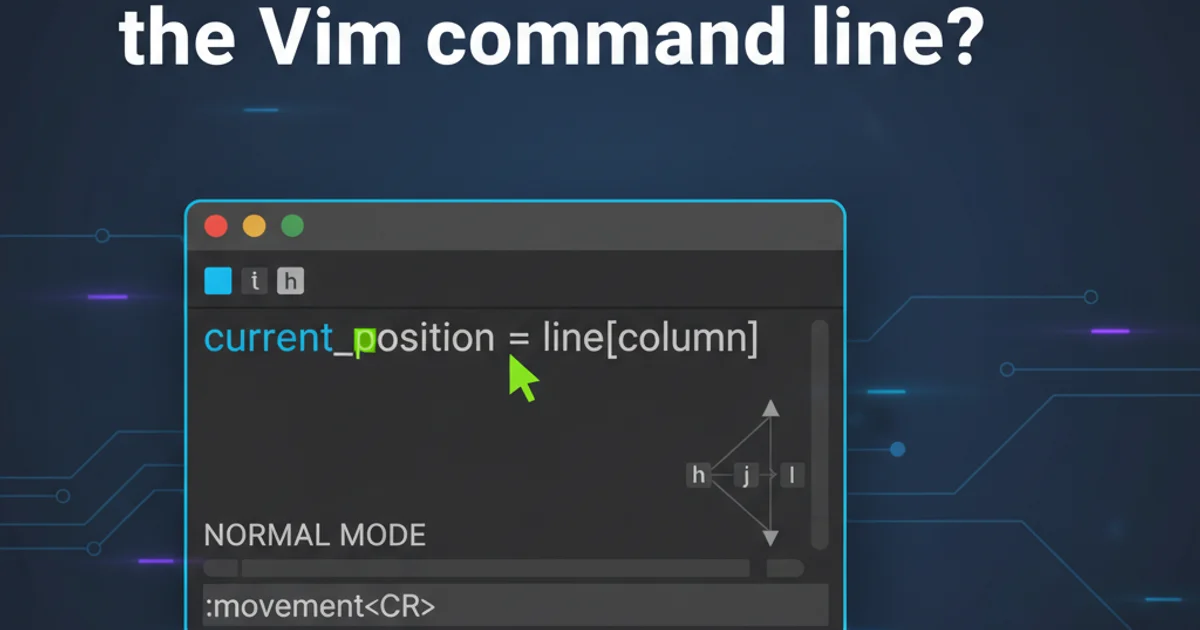How can I move around in the Vim command line?
Categories:
Mastering the Vim Command Line: Efficient Navigation Techniques

Unlock the full potential of Vim's command-line mode by learning essential navigation commands, history management, and powerful editing shortcuts.
The Vim command line, often accessed by pressing : in normal mode, is a powerful interface for executing commands, searching, and interacting with the editor. While many users are familiar with basic commands like :w (write) or :q (quit), mastering navigation within this mini-buffer can significantly boost your productivity. This article will guide you through various techniques to move around, edit, and recall commands efficiently.
Basic Navigation and Editing
Just like in normal mode, you can move the cursor around the command line using familiar keys. However, some keys behave slightly differently or offer additional functionality specific to the command line. Understanding these basic movements is the first step to becoming proficient.
Ctrl-b Move to the beginning of the command line
Ctrl-e Move to the end of the command line
Ctrl-f Move forward one character
Ctrl-h Move backward one character (or Backspace)
Left Arrow Move backward one character
Right Arrow Move forward one character
Alt-b Move backward one word
Alt-f Move forward one word
Basic cursor movement commands in Vim's command line
Ctrl and Alt key combinations are consistent with shell environments like Bash or Zsh, making them easier to remember if you're already familiar with command-line editing.Command Line History and Recall
Vim keeps a history of all commands you've entered. This history is invaluable for re-executing previous commands or using them as a starting point for new ones. There are several ways to navigate and search this history.
flowchart TD
A[Start Command Line (:) ] --> B{Need previous command?}
B -- Yes --> C[Press Up Arrow]
C --> D{Found desired command?}
D -- No --> C
D -- Yes --> E[Edit or Execute]
B -- No --> F{Need to search history?}
F -- Yes --> G[Ctrl-p / Ctrl-n]
G --> H{Found desired command?}
H -- No --> G
H -- Yes --> E
F -- No --> I[Type new command]
E --> J[Execute (Enter)]
I --> JWorkflow for recalling and using command line history
Up Arrow Recall previous command from history
Down Arrow Recall next command from history
Ctrl-p Recall previous command matching current input
Ctrl-n Recall next command matching current input
Ctrl-r " Paste contents of unnamed register (last yanked/deleted text)
Ctrl-r / Paste contents of search register (last search pattern)
Commands for navigating and searching command line history
Ctrl-p and Ctrl-n commands are particularly powerful. If you've typed part of a command, they will cycle through only those history entries that match your current input, acting as an incremental search.Advanced Editing and Completion
Beyond basic movement, Vim's command line offers advanced editing features and completion mechanisms that can save you keystrokes and prevent typos. These include deleting words, changing case, and leveraging tab completion.
Ctrl-w Delete the word before the cursor
Ctrl-u Delete from cursor to beginning of line
Ctrl-k Delete from cursor to end of line
Ctrl-t Swap character under cursor with previous character
Tab Command/file/directory completion (press multiple times to cycle)
Ctrl-d List possible completions (if Tab doesn't complete immediately)
Advanced editing and completion commands
1. Access the Command Line
From normal mode, press : to enter command-line mode. You'll see a colon at the bottom of your screen.
2. Type a Partial Command
Start typing a command, for example, :s for substitute or :e for edit. Do not press Enter yet.
3. Use Tab Completion
Press the Tab key. Vim will attempt to complete the command. If there are multiple possibilities, press Tab again to cycle through them, or Ctrl-d to list all options.
4. Navigate History with Partial Match
After typing a partial command, press Ctrl-p to cycle backward through history entries that match your partial input. Use Ctrl-n to cycle forward.
5. Edit and Execute
Once you have the desired command, use the navigation and editing commands (e.g., Ctrl-b, Alt-f, Ctrl-w) to modify it as needed, then press Enter to execute.